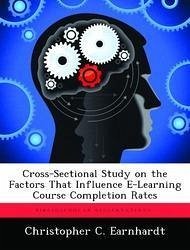Completion rates for web-based courses tend to lag behind their traditional classroom counterparts, sometimes as much as 40% (Carter, 1996; Phipps and Merisotis, 1999; Zielinski, 2000). Thurston and Reynolds (2002) employed motivational constructs to explain why some people persist while others drop out of web-based courses. Their analysis of eight web-based courses and responses from 497 active duty Air Force students indicated that completion goals, off-task distractions, availability of feedback for self-regulation, and continued confidence were important factors that distinguished those who completed their courses from those who did not. One limitation for the 2002 study was its inability to assess the combined effects of these factors. This current study addresses this limitation by assessing the influence of motivational factors on transfer of learning to the work environment and intentions to pursue e-learning courses in the future. A survey was administered to 1,946 active duty and civilian students who had enrolled in one of the 20 courses offered by the Air Force Institute of Technology's Virtual Schoolhouse. Results were analyzed using the LISREL (Joreskog and Sorbom, 1993) structural equation modeling program. Analysis of the 791 usable responses provided strong evidence for the hypothesized relationships. Practical and theoretical implications of this research are discussed.








